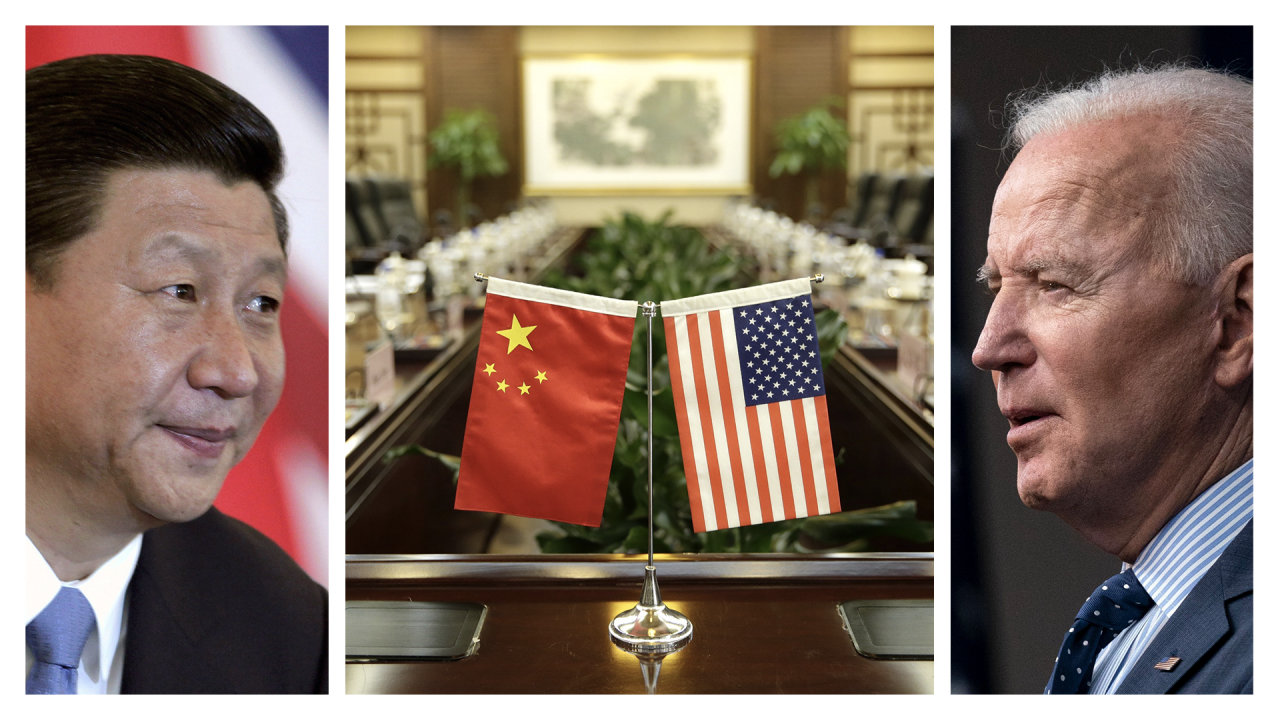The Fractured Relationship: Understanding The Current State Of U.S.-China Relations And The Cold War Specter

Table of Contents
Historical Context: From Ping Pong Diplomacy to Trade Wars
The relationship between the United States and China has been a rollercoaster ride, swinging wildly between cooperation and confrontation. The journey began with the groundbreaking "Ping Pong Diplomacy" of the early 1970s, a symbolic gesture that paved the way for President Nixon's historic visit to China in 1972. This marked the start of a period of cautious engagement, culminating in China's accession to the World Trade Organization (WTO) in 2001, a move that dramatically increased economic integration between the two nations.
However, this period of relative harmony has been punctuated by significant escalation points that have brought the relationship to its current fractured state. These include:
- South China Sea Disputes: China's increasingly assertive claims in the South China Sea, challenging international maritime law and the sovereignty of neighboring countries, have fueled tensions.
- The Taiwan Issue: China's unwavering claim over Taiwan, a self-governing democracy, remains a major point of contention and a potential flashpoint for military conflict.
- Trade Wars: The Trump administration's imposition of tariffs on Chinese goods, followed by retaliatory measures from China, escalated into a full-blown trade war, disrupting global supply chains and damaging economic ties.
- Technological Rivalry: Competition in critical technologies like 5G, artificial intelligence (AI), and semiconductors has intensified, leading to accusations of espionage, intellectual property theft, and unfair trade practices.
These events, coupled with shifting geopolitical landscapes and the rise of China as a global power, have dramatically reshaped the U.S.-China relationship, transforming it from one of cautious cooperation to one of intense strategic competition.
Economic Interdependence and Strategic Competition: A Paradoxical Relationship
The U.S. and China are inextricably linked economically. For decades, both nations have benefited from extensive trade, investment, and supply chain integration. China's emergence as the "world's factory" has fueled immense economic growth, while the U.S. has enjoyed access to cheaper goods and a vast consumer market. This mutual economic reliance is a key feature of the relationship.
However, this interdependence is increasingly overshadowed by strategic competition:
- Trade Imbalances: Persistent trade deficits have fueled protectionist sentiments in the U.S., leading to trade disputes and efforts to "decouple" the two economies.
- Technological Competition: The race for technological dominance is a central element of the rivalry, with both nations investing heavily in research and development, particularly in areas like 5G, AI, and semiconductor technology. This competition often spills over into accusations of intellectual property theft and unfair trade practices.
- Supply Chain Diversification: Concerns about over-reliance on China for critical goods and technologies are driving efforts in the U.S. and other countries to diversify supply chains and reduce dependence on Chinese manufacturing.
Ideological Differences and Geopolitical Rivalry: The New Cold War?
Underlying the economic and technological competition are fundamental ideological differences. The U.S., a champion of liberal democracy, stands in stark contrast to China's authoritarian political system. These contrasting values fuel geopolitical rivalry and contribute significantly to the fractured relationship.
- Human Rights Concerns: U.S. concerns over human rights abuses in China, including the treatment of Uyghurs, suppression of dissent, and lack of political freedoms, are major sources of friction.
- Competition for Global Influence: China's Belt and Road Initiative (BRI) and the U.S.'s Indo-Pacific Strategy represent competing visions for global order and influence, leading to a struggle for alliances and partnerships. The formation of alliances like NATO and the QUAD (Quadrilateral Security Dialogue) further underscores this geopolitical competition.
- The "New Cold War" Debate: The intensity of the current rivalry has led some to label the situation a "new Cold War." While there are undeniable parallels – ideological differences, geopolitical competition, arms races – crucial distinctions exist. Unlike the original Cold War, the U.S. and China are deeply economically intertwined, and the lines of conflict are less clearly defined.
The Taiwan Issue: A Potential Flashpoint
The status of Taiwan is arguably the most volatile aspect of U.S.-China relations. China views Taiwan as a breakaway province and has vowed to reunify it with the mainland, by force if necessary. The U.S., while maintaining a policy of "strategic ambiguity" regarding its commitment to defend Taiwan, has increased its military support for the island.
- China's Claim: China's claim to Taiwan is a core national interest, and any perceived move towards Taiwanese independence is likely to trigger a strong response.
- U.S. Policy: The U.S. policy of "strategic ambiguity" aims to deter China from attacking Taiwan while avoiding a commitment that could escalate tensions. However, this policy's effectiveness is increasingly questioned.
- Military Buildup: Both China and the U.S. are significantly increasing their military presence in the region, further raising the risk of miscalculation and accidental conflict.
Conclusion
The history of U.S.-China relations is a complex tapestry of cooperation and conflict. Today, the relationship is deeply fractured, characterized by an uneasy mix of economic interdependence and fierce strategic competition. The potential for escalation, particularly concerning Taiwan, remains a significant concern. Understanding the intricacies of this relationship, encompassing its historical context, economic dimensions, ideological differences, and geopolitical implications, is critical for navigating the uncertain future. Understanding the complexities of U.S.-China relations is crucial for navigating the uncertain geopolitical landscape. Continue to learn more about this fractured relationship to stay informed and engaged in this vital discussion. Follow reputable news sources and participate in thoughtful discussions about U.S.-China relations to stay abreast of the evolving dynamics in this critical bilateral relationship.

Featured Posts
-
 Hegseth Under Fire Pentagon Chaos Claims And New Signal Chat
Apr 22, 2025
Hegseth Under Fire Pentagon Chaos Claims And New Signal Chat
Apr 22, 2025 -
 Analyzing Todays Stock Market Dow Futures Dollar And Trade Tariff Worries
Apr 22, 2025
Analyzing Todays Stock Market Dow Futures Dollar And Trade Tariff Worries
Apr 22, 2025 -
 Florida State University Security Breach Student Fears Despite Swift Police Response
Apr 22, 2025
Florida State University Security Breach Student Fears Despite Swift Police Response
Apr 22, 2025 -
 Will Google Be Broken Up Examining The Antitrust Challenges
Apr 22, 2025
Will Google Be Broken Up Examining The Antitrust Challenges
Apr 22, 2025 -
 Analyzing The Bank Of Canadas Pause Key Takeaways From Fp Video Interviews
Apr 22, 2025
Analyzing The Bank Of Canadas Pause Key Takeaways From Fp Video Interviews
Apr 22, 2025
